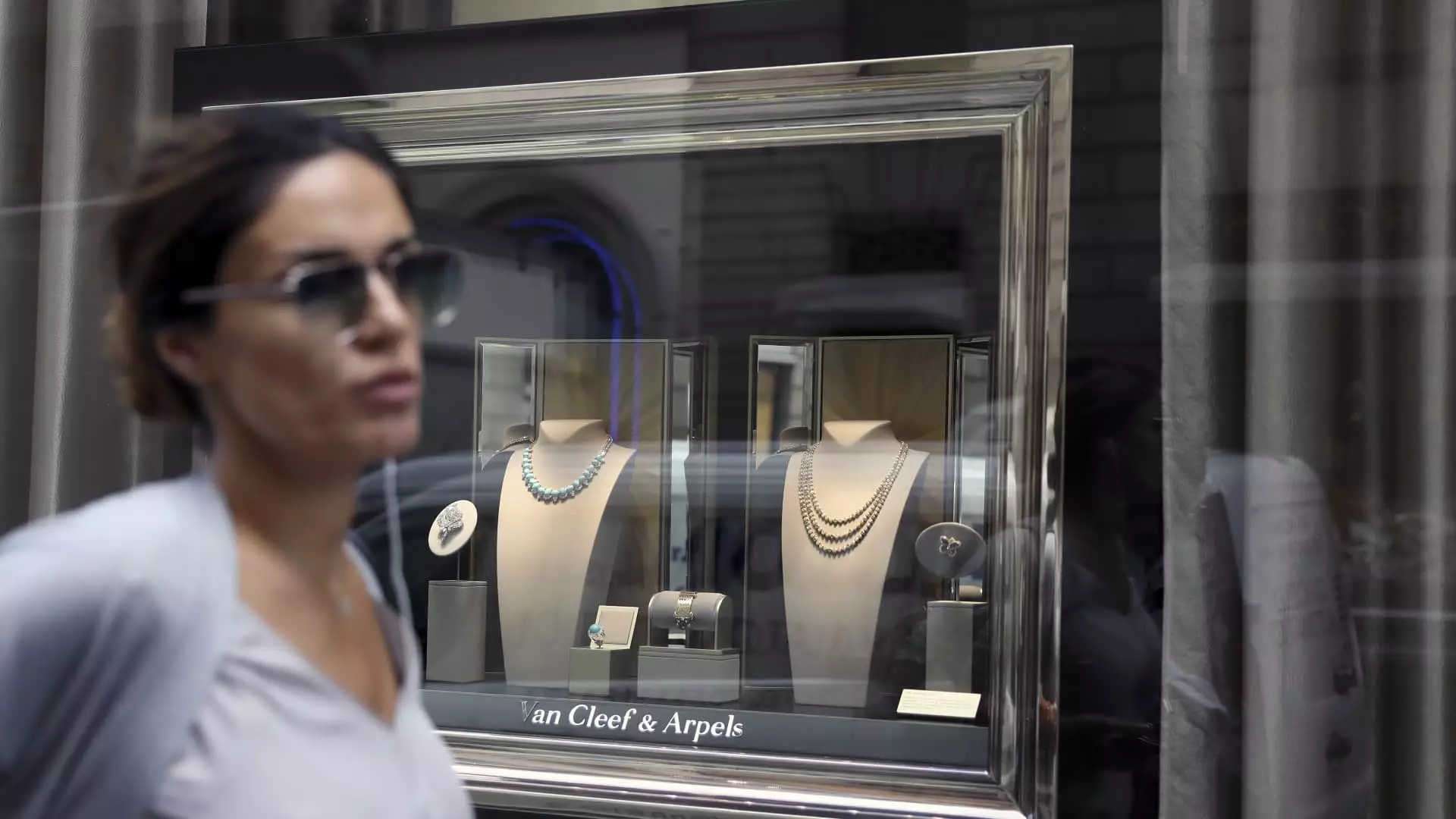In a world where opulence knows no bounds, the wealthiest individuals have taken luxury to an art form, bedecking themselves in shimmering diamonds and rare gemstones. While the broader luxury market witnesses a noticeable retreat in spending, the elite continue to indulge, fueling a divide that underscores the growing chasm between the super-rich and the average consumer. In times of economic uncertainty, it seems that the desire for luxury, especially in the form of exquisite jewelry, remains unwavering among those at the top. This unwavering appetite for grandeur has predominantly benefitted Swiss luxury powerhouse Richemont, which oversees an impressive array of prestigious brands like Cartier, Van Cleef & Arpels, and Buccellati.
Luxury vs. Accessibility: A Discerning Market
Yet, even within this realm of affluence, the dynamics are shifting. The most affluent consumers are no longer satisfied with simply wearing luxury; they demand exquisite craftsmanship and exclusivity. In a time when some luxury shoppers are hesitating, Richemont’s jewelry brands stand out with a level of desirability that is unparalleled. According to industry analyst Luca Solca, there is no question regarding the stature of Richemont’s offerings. They remain leagues ahead, despite the challenges posed by competing conglomerates like LVMH. For instance, while LVMH attempts to keep pace, the undeniable allure of Richemont’s crafted pieces keeps them at the forefront of consumer preference.
The Ticking Time Bomb: Watches in Decline
Interestingly, the success of Richemont’s jewelry brands casts a shadow on the performance of its watch segment. Watch sales plummeted by 13% in 2024, primarily due to sluggish demand from China—a critical market for high-end timepieces. Despite the temporary stabilization in North American demand, this downturn reveals a startling trend: the watch industry is faring less favorably compared to its jewelry counterpart. Solca poignantly notes that during the pandemic, many individuals indulged in the purchase of watches, leading to market saturation that will likely take considerable time to absorb. Consumers appear to be pivoting towards jewelry, perhaps fueled by the more frequent purchasing nature of these adornments. Unlike prestigious watches, which are often marketed as lifetime investments, jewelry is becoming more popular due to its perceived affordability and diversity.
Future Uncertainties: Economic Pressures and Market Vulnerabilities
While Richemont’s jewelry division showcased impressive growth, it would be reckless to overlook the broader economic factors looming over its operations. The company’s chairman, Johann Rupert, acknowledges these challenges head-on, stressing their resolve against unwarranted price hikes—propelled primarily by increasing gold prices and complex tariff regulations. Richemont’s strategy of focusing on sustainability in pricing is commendable, especially as other luxury brands might rush into the cycle of inflationary price gouges. However, what happens when economic realities tighten their grip?
The performance of many premium Swiss watchmakers further impacts Richemont’s standing, given their privately-held status that obscures precise sales performance metrics. This lack of transparency complicates the landscape, rendering future predictions more hazardous. The interplay between macroeconomic factors and consumer behavior creates a volatile environment where the fortune of one segment can severely influence another—a tipping scale that Richemont needs to navigate carefully.
Looking Ahead: The Jewel of Resilience
Despite these challenges, the increasing prominence of jewelry purchases could work in Richemont’s favor. The luxury market’s vulnerabilities may strengthen the brand’s foothold, as the pressure of economic hardship could impede the sale of higher-ticket items, leaving the jewelry sector as a beacon in this tumultuous climate. As Solca notes, the fundamental market dynamics point toward a scenario where jewelry not only prevails but thrives, owing to its more accessible price points compared to other luxury categories.
However, industry experts consistently underline the headwinds Richemont faces. The strength of the Swiss franc against the dollar could further complicate margins while pushing luxury pricing higher—an unsustainable mix of factors for any brand. Moreover, the lingering impact of the pandemic continues to shape consumer behavior and spending patterns favoring certain luxury goods over others, posing ongoing challenges for Richemont.
In a landscape where sparkle can mask underlying fragilities, the evolution of luxury jewelry looks promising but precarious. The super-rich may continue their extravagant spending, yet for the rest, the jewels of resilience may be issued with a risk: the potential isolation of a market that, if uncareful, could blind itself to future opportunities.

